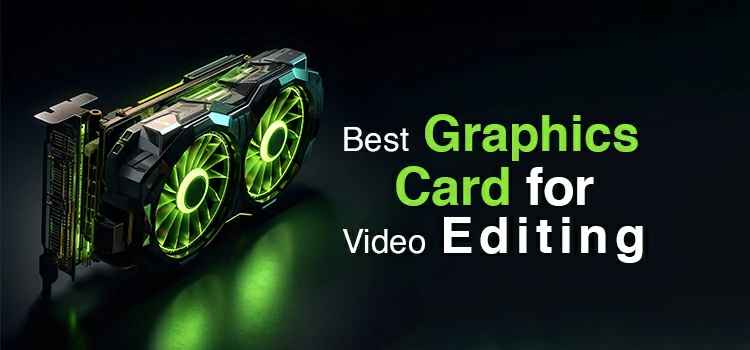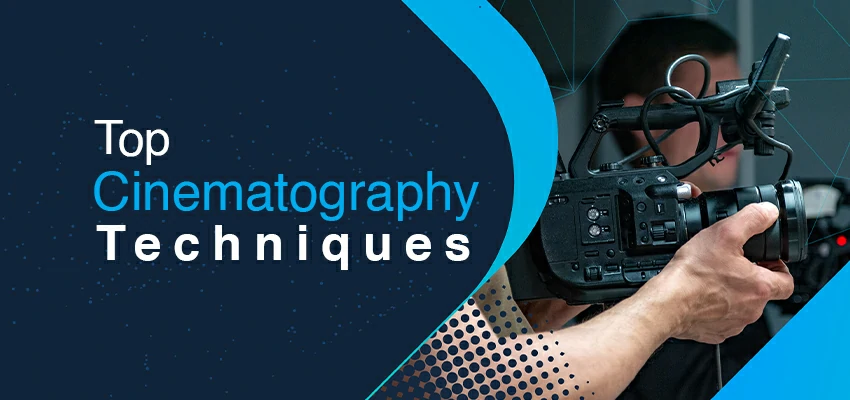Best AI Filmmaking Apps 2026: From Script to Screen in Seconds
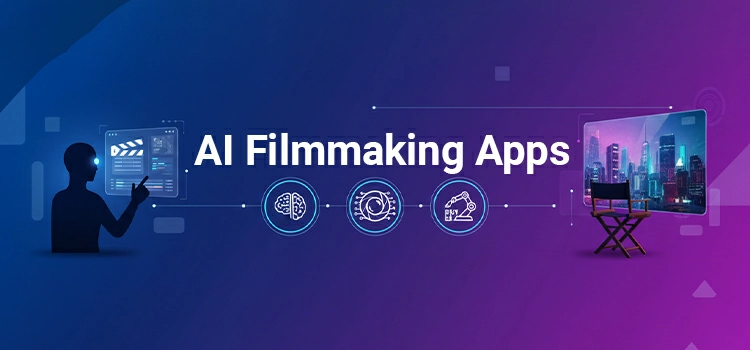
So you’ve got this film idea waiting in your notebook. But with an unaffordable crew, missing gear, and a deadline that’s already laughing at you, it feels impossible. We’ve been there too.
Here’s the thing: AI filmmaking apps aren’t magic wands, but they are damned good teammates. They’ll plan your scenes while you sleep. They can create a rain-soaked alleyway without getting anyone wet.
Plus, they’ll help you pitch your vision with footage that looks like you spent thousands, even if you only spent twenty bucks. We spent three months stress-testing 30+ of these tools from both sides of the camera.
Some blew my mind. Others just blew smoke. These ten? They’re the ones who actually show up to set and do the work. Let’s talk about which one fits your project.
Top 3 AI Video Generators (The Powerhouses)
Meet the three AI video generators leading in 2026. One excels in cinematic realism, another in storytelling coherence, and the last offers pro-grade control. Here’s the breakdown.
1. Google Veo 3.1
(Best for Hyper-Realistic Cinematic Footage)
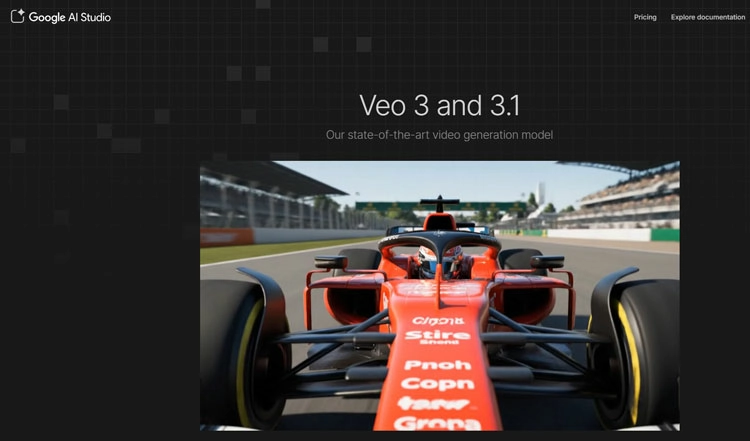
Quick Stats:
- Price: $50-100/month (estimated, waitlist-only)
- Access: Limited beta via Google Labs
- Best For: Concept trailers, high-fidelity b-roll, VFX pre-visualization
- Rating: ⭐⭐⭐⭐⭐ (5/5 for quality)
What Makes It Special:
Veo 3.1 is a trusted AI generator for cinematographers, producing cinema-quality footage. It has a Director’s mode for customizing lens, aperture, and lighting.
An indie director created 12 establishing shots for a pitch deck using Veo, securing $500K in funding without needing to film. Veo’s lip-synced characters and realistic effects, such as water and fire, are unparalleled.
Key Features:
– Native audio generation with sound effects and background music
– Log gamma profiles for professional color grading
– Realistic physics simulation for complex natural elements
– Seamless Google Cloud integration
Pros & Cons:
– Pros: Unmatched cinematic realism, professional camera controls, end-to-end audio-video generation
– Cons: Extremely limited beta access, the highest cost tier requires powerful hardware
Who Should Use It?
“Studios and funded indies needing pitch materials that look like they cost $10K to shoot.”
2. Sora 2 (OpenAI)
(Best for Long-Form Coherent Storytelling)
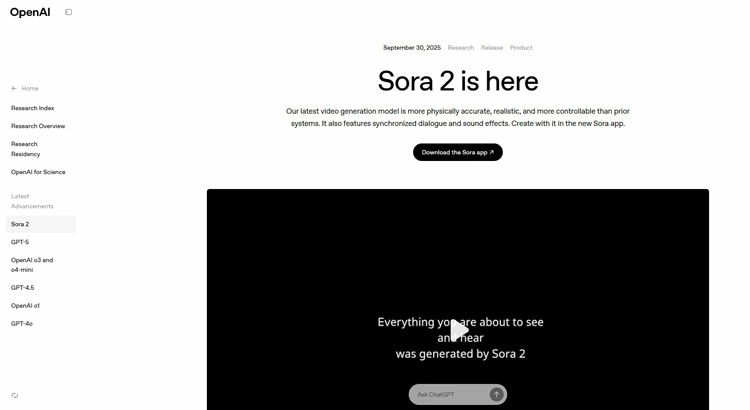
Quick Stats:
- Price: $200/month (ChatGPT Pro)
- Access: Invite-only beta
- Best For: Narrative sequences, dialogue scenes, multi-shot consistency
- Rating: ⭐⭐⭐⭐☆ (4.5/5)
What Makes It Special:
Sora 2’s “scene memory” keeps track of character looks, outfits, and settings for 60-second scenes. This is vital for real storytelling, not just flashy clips. The “cameo” feature allows you to add real people into AI-made scenes.
It offers lip-sync and automatic storyboards, making it ideal for prototyping. The model excels in near-real physics simulation and ensures scene continuity, solving the common issue of random and confusing AI video outputs.
Key Features:
– Maintains character/environment consistency across shots
– Physics-accurate motion and interactions
– Storyboard generation from text scripts
– Integrated with ChatGPT for script refinement
Pros & Cons:
– Pros: Best narrative coherence, strong physics simulation, powerful storytelling tools
– Cons: Expensive subscription, limited to 1080p output, heavy censorship filters
Who Should Use It?
Screenwriters and directors prototype scenes before principal photography—especially for dialogue-heavy projects.
3. Runway ML (Gen-4 & Aleph)
(Best for Full Editing Workflow & VFX)

Quick Stats:
- Price: Free tier (125 credits), Standard $12/month, Pro $28/month
- Access: Publicly available
- Best For: VFX work, rapid prototyping, experimental filmmaking
- Rating: ⭐⭐⭐⭐☆ (4.5/5)
What Makes It Special:
Runway is a complete creative suite. The Gen-4 model creates exceptional first frames, and the Aleph model allows precise edits, such as changing camera angles or removing backgrounds.
Runway stands out with its ecosystem, integrating Photoshop, motion brushes, and NLE exports. It innovates continuously, with new models every month.
Key Features:
– Text-to-video, image-to-video, and video-to-video
– Motion Brush for precise movement control
– Background removal and inpainting tools
– Direct integration with Adobe Creative Cloud
Pros & Cons:
– Pros: Affordable pricing, robust feature set, active development, strong community
– Cons: Can struggle with complex multi-object movements, free tier limits are tight
Who Should Use It?
Indie filmmakers, VFX artists, and creators need a versatile tool that grows with their skills.
Best AI Pre-Production & Workflow Apps
These three apps clarify your script, storyboard shots, and organise chaos before filming starts. They help bring movies to life during pre-production.
1. SHAI Creative
(Best for AI Pre-Production Acceleration)
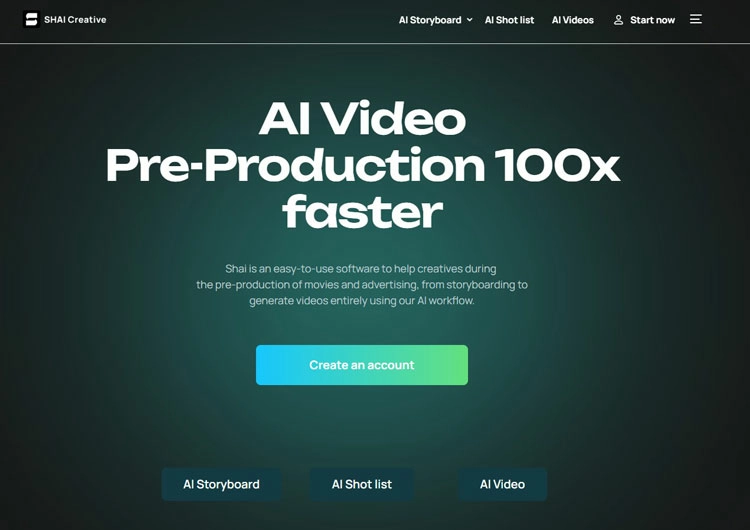
Quick Stats:
- Price: Free tier available; Pro starts at $49/month
- Access: Publicly available
- Best For: Directors, producers, and line producers managing complex productions
- Rating: ⭐⭐⭐⭐⭐ (5/5 for workflow speed)
What Makes It Special:
SHAI Creative gets your script. Upload a screenplay, and it creates shot lists, character breakdowns, and storyboards in under 10 minutes. The “Director’s Lens” suggests camera angles. Your team can also comment on animatics in real-time.
SHAI exports to industry-standard software, reducing pre-production time by up to 100 times. One company prepared for a 30-day shoot in just 72 hours, saving $15,000 in labour costs.
Key Features:
– Automatic script breakdown (characters, locations, props, VFX)
– AI-powered shot list with camera suggestions
– Storyboard-to-animatic conversion
– Direct export to Movie Magic Scheduling and XML for NLEs
Pros & Cons:
– Pros: Cuts prep time significantly, encourages collaboration, adapts to your visual style.
– Cons: Top features only in Pro tier, challenging for non-tech-savvy users.
Who Should Use It?
Producers and directors who want to spend less time in spreadsheets and more time on set.
2. LTX Studio
(Best for End-to-End Script-to-Screen Workflow)
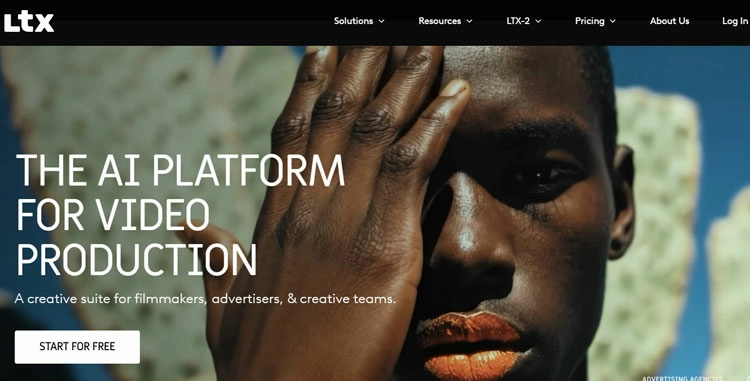
Quick Stats:
- Price: $49/month (early access pricing)
- Access: Public beta
- Best For: Production companies, agencies, unified project management
- Rating: ⭐⭐⭐⭐☆ (4.5/5)
What Makes It Special:
LTX Studio is an AI production hub that combines script analysis, storyboarding, and shot planning. Its “Visual Script” feature lets you attach reference images to each scene.
What makes it unique is the integration layer. You can connect your Runway, Sora, or Veo accounts to create footage right in your storyboard frames. Your team watches the vision grow in real-time, not lost in email threads.
Key Features:
– Unified workspace for script, boards, and generated footage
– AI casting suggestions and character consistency tracking
– Budget estimation based on script complexity
– Team collaboration with permission tiers
Pros & Cons:
– Pros: The all-in-one ecosystem, user-friendly interface, and strong AI generator integration are all advantages.
– Cons: The higher price and the fact that it’s still in beta, which may result in bugs, are drawbacks.
Who Should Use It?
“Production companies and agencies need a single source of truth from pitch to final cut.”
3. Filmustage
(Best for Automated Script Breakdown & Scheduling)
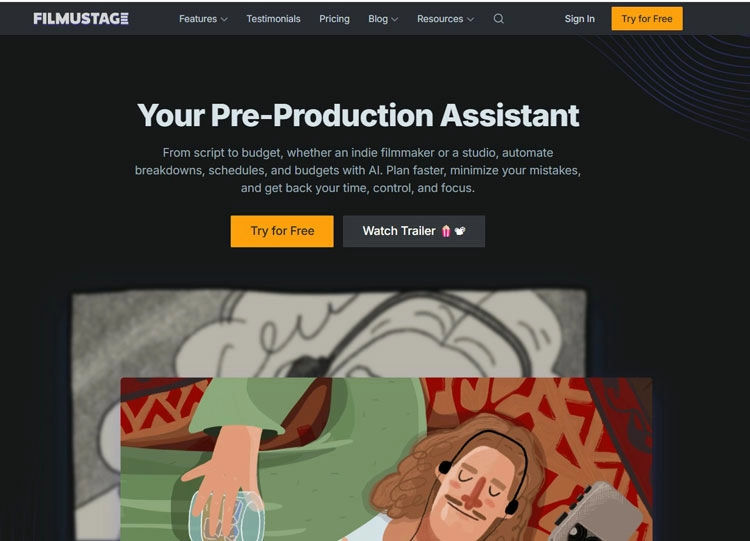
Quick Stats:
- Price: $49/month per project
- Access: Publicly available
- Best For: Line producers, ADs, production managers
- Rating: ⭐⭐⭐⭐☆ (4/5 for accuracy)
What Makes It Special:
Filmustage is the AI assistant that production coordinators need. It tags script scenes with required elements like cast, props, and VFX, and even flags potential continuity issues.
The platform’s “Stripboard” view lets you drag-and-drop scenes while the AI auto-updates call sheets and day-of-days. It won’t replace your 1st AD, but it’ll make them 10x more efficient.
Key Features:
– AI-powered script breakdown with 95%+ accuracy
– Automatic stripboard generation and optimization
– Conflict detection (location, cast, props)
– Export to Movie Magic Scheduling, Gorilla, and PDF call sheets
Pros & Cons:
– Pros: Automates script breakdowns from 100+ hours to 2 minutes, auto-tagging characters, props, locations, and VFX with near-perfect accuracy
– Cons: Single-project pricing adds up, less visual than LTX/SHAI, requires clean script formatting
Who Should Use It?
Line producers and 1st ADs who live and die by the production schedule.
Specialized AI Tools for Specific Needs
These AI filmmaking tools solve specific problems, like targeting Asian markets or creating viral social content.
1. Kling 2.5 Turbo
(Best for Asian Market Storytelling & Speed)
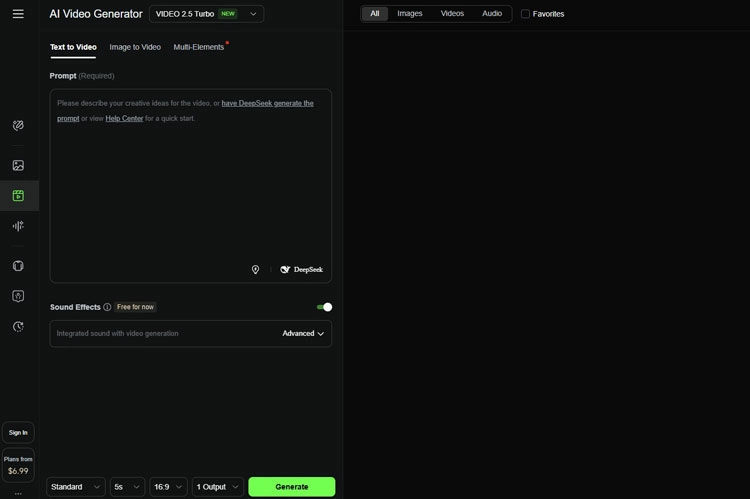
Quick Stats:
- Price: $6.99/month for 600 credits
- Access: Publicly available
- Best For: Chinese content, fast-turnaround social content, training videos
- Rating: ⭐⭐⭐⭐☆ (4/5)
What Makes It Special:
Kling 2.5 Turbo is an incredibly fast AI video generator. It excels at Asian facial structures and complex lighting. It renders a 5-second clip in under 30 seconds, making it ideal for creators who need speed.
Kling excels at dramatic camera motion, producing cinematic flair without the cost. It’s ideal for e-commerce and educational content in Asian markets, where cultural accuracy is crucial.
Key Features:
– Sub-30-second generation times
– Superior handling of Asian ethnicities and cultural aesthetics
– Dramatic, physics-accurate camera movements
– Optimized for commercial and training video workflows
Pros & Cons:
– Pros: Unbeatable speed, culturally nuanced outputs, affordable credit-based pricing
– Cons: Limited to 1080p, English prompts can be hit-or-miss, less effective with non-Asian subjects
Who Should Use It?
Creators targeting Asian markets or anyone who values speed over absolute pixel perfection, including social media managers, corporate trainers, and regional content houses.
2. Higgsfield
(Best for Realistic Human Performance & Emotion)
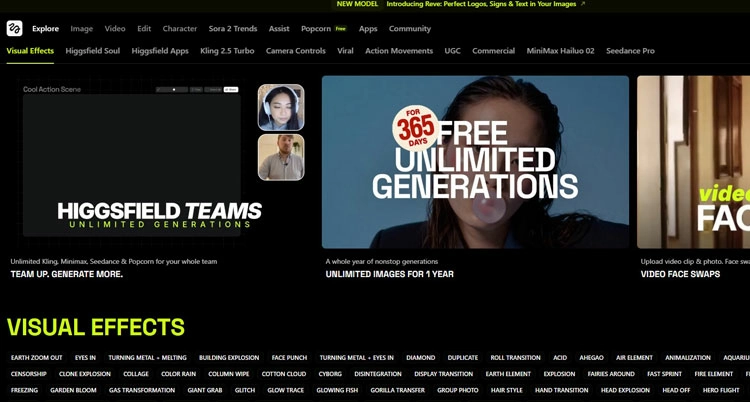
Quick Stats:
- Price: Starts at $9/month for 150 credits
- Access: Publicly available
- Best For: Close-up acting scenes, character-driven narratives, dialogue-heavy content
- Rating: ⭐⭐⭐⭐☆ (4.5/5)
What Makes It Special:
Higgsfield’s proprietary model is trained on micro-expressions, body language, and emotional transitions, making its performances feel alive. It gets the small details right, like eyebrow raises and authentic blink patterns.
The “Emotion Engine” allows you to adjust levels of joy, anger, and sorrow. It’s not just about creating a character; it’s about creating a performance.
Key Features:
– Exceptional facial expression and micro-movement accuracy
– Advanced lip-sync with emotional context
– Body language synthesis from text prompts
– “Emotion Engine” for fine-tuning performance intensity
Pros & Cons:
– Pros: Most realistic human performances, strong emotional range, excellent for close-ups
– Cons: Slower generation times, struggles with complex multi-character scenes, and credit consumption is high
Who Should Use It?
Filmmakers creating character studies, acting showcases, or any project where human emotion drives the story.
3. Pika Labs
(Best for Viral Social Content & Creative Experimentation)
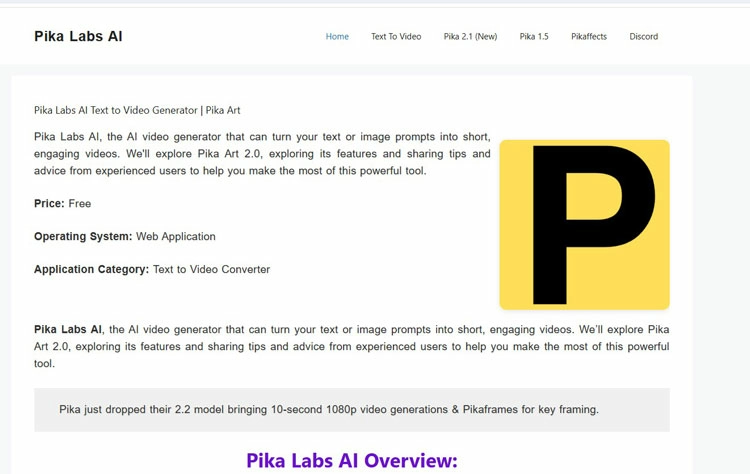
Quick Stats:
- Price: Free tier available; Pro plans start at $10/month
- Access: Publicly available
- Best For: TikTok, Instagram Reels, experimental art projects
- Rating: ⭐⭐⭐☆☆ (3.5/5)
What Makes It Special:
Pika Labs is an AI video lab focused on innovation over perfection. Its “Pikaffects” feature applies unusual transformations, making objects explode or people turn into claymation figures.
The platform combines speed and weirdness to grab attention. It has a community library where creators can quickly remix popular effects. They focus on engagement rather than realism.
Key Features:
– Viral “Pikaffects” (explode, cake-ify, claymation, etc.)
– Lightning-fast text-to-video for social formats
– Active community prompt library
– Direct export optimized for TikTok/Reels
Pros & Cons:
– Pros: Extremely fun and creative, perfect for social media, fastest iteration cycle
– Cons: Low resolution (720p max), inconsistent quality, not suitable for professional film work
Who Should Use It?
Social media managers, digital artists, and anyone whose success metric is views, not festival screenings.
4. ImagineArt
(Best for Multi-Model Flexibility & Cost Efficiency)
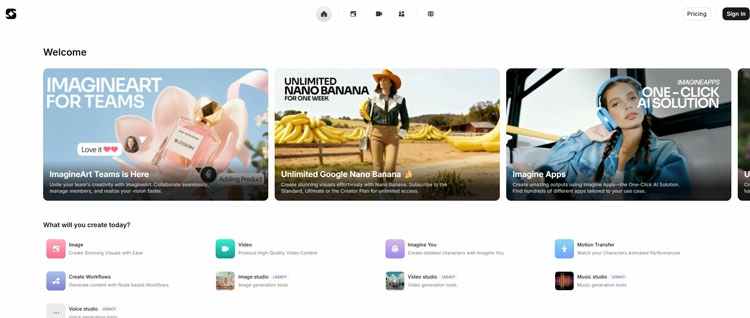
Quick Stats:
- Price: $15/month ($10/month annually)
- Access: Publicly available
- Best For: Filmmakers wanting model flexibility without multiple subscriptions
- Rating: ⭐⭐⭐⭐☆ (4/5)
What Makes It Special:
ImagineArt is an all-in-one multitool for creators. It combines four tools into one platform, allowing instant A/B testing and easy blending of outputs. Use different models for specific tasks, all in one timeline.
Beyond video, it includes AI audio generation, character consistency tracking, and a surprisingly robust editor. For cash-strapped creators, it’s the buffet that costs less than two à la carte meals.
Key Features:
– Access to multiple top-tier AI models in one subscription
– “Model Mixer” for hybrid AI workflows
– Built-in editing, color correction, and audio generation
– Character consistency across different model outputs
Pros & Cons:
– Pros: Best value for money, eliminates subscription fatigue, powerful hybrid workflows
– Cons: Dependent on partner models’ availability, some latency when switching between models, and less direct support from original developers
Who Should Use It?
“Budget-conscious filmmakers who want to experiment with multiple AI models without managing five different accounts and invoices.”
How to Choose the Right AI Filmmaking App for Your Project
30 apps, 10 finalists. Picking the wrong tool is expensive and embarrassing. Here’s a simple framework to match the right AI to your needs.
Q1: What’s Your End Goal?
Be brutally honest about the deliverable:
Pitch Deck or Concept Trailer → Veo 3.1 or Sora 2. You need cinematic polish that fools investors. The $200/month sting beats a $20K location shoot.
Social Content & Experiments → Pika Labs or Runway ML. Speed and virality trump perfection. Generate five TikTok hooks before lunch.
Pre-Production & Planning → SHAI Creative or Filmustage. If your script is 120 pages of chaos, bring order before you hire a crew.
VFX & B-Roll → Runway ML or ImagineArt. Remove backgrounds, extend shots, and generate supplementary footage that cuts into your timeline.
Q2: What’s Your Real Budget?
Free trials lie. Calculate the actual monthly cost when you’re generating daily:
$0-10/month → Runway (125 free credits), Pika Labs (free tier). Great for testing, frustrating for production.
$15-50/month → ImagineArt ($15), Kling 2.5 ($7), Higgsfield ($9). This is the indie filmmaker sweet spot: flexibility without bankruptcy.
$100-200/month → LTX Studio ($49) + Sora 2 ($200). Studio territory. If you’re not billing clients, this is overkill.
Q3: Do You Need to Edit After Generation?
This is the dealbreaker:
Yes, I’m cutting in Premiere/DaVinci → Choose tools that export XML/EDL timelines: SHAI Creative, LTX Studio, Filmustage. Your AI footage is a component, not a final product.
No, I need final footage → Use Sora 2, Veo 3.1, or Runway as your renderer. What you generate is what you publish. No middleman.
Quick Reference: App-to-Project Matching
|
Project Type |
Primary App | Secondary App |
Export Format |
|
Indie Short Film |
SHAI Creative | Runway ML | XML for NLE |
|
Investor Pitch |
Veo 3.1 | Sora 2 |
MP4 direct |
|
TikTok Campaign |
Pika Labs | Kling 2.5 |
MP4 direct |
|
Corporate Training |
Kling 2.5 | Higgsfield |
MP4 direct |
| Feature Pre-Production | Filmustage | LTX Studio |
XML for NLE |
FAQs: AI Filmmaking Apps vs. Professional NLEs
Q: Will AI filmmaking apps replace Adobe Premiere Pro or DaVinci Resolve?
No. AI generates content; NLEs edit, color grade, and mix audio. They’re assistants, not replacements.
Q: What’s the actual cost difference?
AI tools cost $18–$89/month. Traditional production runs $800–$10,000 per minute. AI saves thousands, even if you discard most clips.
Q: How much time do AI apps really save?
Up to 80% faster. A 40-hour edit in hours. Pre-production drops from weeks to minutes.
Q: Is the quality actually good enough for professional work?
Yes for concept trailers and b-roll. No for nuanced performances. Treat AI as your B-camera, not hero shots.
Q: Can I export AI footage into Premiere/DaVinci?
Only SHAI, LTX, and Filmustage export XML/EDL timelines. Others output MP4s, fine for b-roll, useless for grading.
Q: What’s the learning curve like?
AI has a lower entry barrier but requires perpetual learning as models update weekly. NLEs take months to master but remain stable.
Q: Which approach should I use for my project?
Social/training videos: AI only. Cinematic storytelling: Traditional only. Everything else: Hybrid (AI for pre-production/b-roll, NLE for editing).
Q: Are there copyright or ethical concerns with AI footage?
Yes. Tools trained on licensed data (Moonvalley) are safer. Always check the latest EULA terms change monthly.
Q: What’s the best workflow for combining AI and traditional tools?
- AI pre-production (SHAI/Filmustage)
- AI rough cuts (Runway/Sora)
- NLE refinement (Premiere/DaVinci)
- NLE polish 5. AI social cut-downs.
Final Verdict: Build Your AI Toolkit, Don’t Replace Your Brain
2026 isn’t the year AI will replace filmmakers; it’s the year the smart ones stopped doing grunt work. These 10 apps aren’t magic; they’re your new grip department, your storyboard artist, your infinite second unit. They show up on time, don’t complain, and cost less than a single day of craft services.
The Indie Starter Stack: Pair SHAI Creative (free tier) for planning with Runway ML ($12/month) for generation. That’s $12 to test if your idea works before begging for money.
The Studio Powerhouse: LTX Studio ($49) + Veo 3.1 (~$75) gives you a production office that never sleeps. Use it for pitch decks, concept trailers, and that b-roll you forgot to shoot.
The Bottom Line: AI filmmaking apps give you more chances, but your vision still matters.
Pick one tool from each category. Create and learn from the results. Export and open in Premiere. Focus on finding the AI app that speeds up your editing process.
Your Move.



